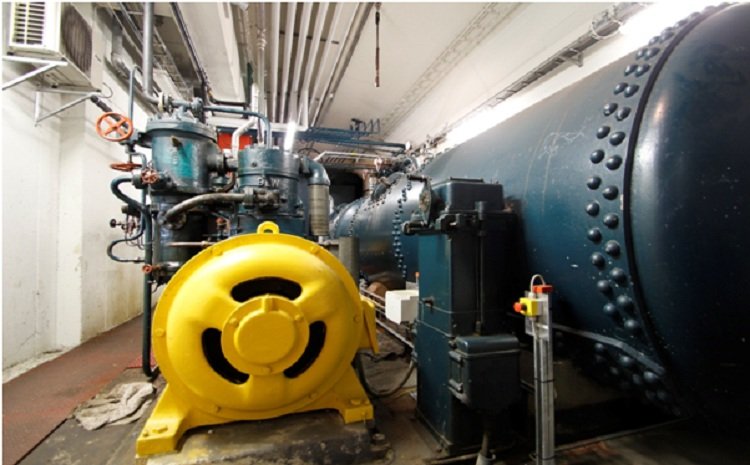Compressor Noise Control
The modern industrial sector is a cacophony of noise. Machine rooms, manufacturing areas, and even office spaces are filled with the clamour of machinery, especially screw and piston compressors, which emit a great deal of sound pollution. When it comes to work, some of these loud sounds are unavoidable; however, others can be prevented and decreased through the use of noise reduction equipment; another alternative is the purchase of quieter equipment.
As a result, the importance of compressor noise control is centred on the health of those who work in these environments, because prolonged exposure to excessive noise has an adverse effect on the health and safety of those who work in these environments.
Chronic exposure to extreme noise has the following consequences!
- Tinnitus: It is an affectation that occurs when there is excessive noise in the environment. This affectation can be diagnosed because it causes a ringing between the ears and is a symptom of hearing loss.
- Hypertension: A noisy atmosphere is not only hazardous to one’s hearing, but it can also have detrimental consequences on one’s overall health, including the development of hypertension.
- Studies have discovered a link between workplace noise and high blood pressure (hypertension). This significant medical disorder has the potential to cause heart disease and stroke.
- Stress and sleep problems: According to research undertaken by the University of Pennsylvania, excessive noise levels might cause sleep disorders as well as an increase in workplace stress.
The effects of occupational noise on people’s health have a direct impact on the hazards and accidents that occur on the job. When we live in an environment where noise interferes with our ability to communicate, the risk of injury increases dramatically.
What is the level of noise produced by compressors?
The amount of noise produced by the equipment varies based on the brand of equipment and the accessories that are installed. Sound levels generated by piston compressors that are not protected by soundproofing sheds range between 72 and 80 dB when measured at a distance of one metre.
The majority of lubricated screw compressors are equipped with acoustic isolation booths, which allows us to achieve sound levels ranging from 62 decibels in compressors with a power of 15 horsepower to 68 decibels in compressors with a power of 40 or 50 horsepower, and finally 72 decibels in compressors with a power of 100 horsepower.
To summarise, screw compressors have a huge advantage over piston compressors in terms of the amount of noise they produce. However, there may be changes in noise levels across screw compressors due to differences in the number of revolutions per minute of the compressor unit or the type of fan that is utilised.Screw and scroll technology compressors, which are used every day, are designed for silent operation.
Noise levels are subjected to the following tolerance thresholds!
The optimal level for human hearing at one metre distance is between 55 and 62 dB.However, exposure for more than 30 minutes without protective equipment can result in headaches, rapid blinking, and ringing in the ears. 62 – 70 decibels: Still an acceptable range, but exposure for more than 30 minutes without protective equipment can result in headaches, rapid blinking, and ringing in the ears.
Noise levels between 72 and 82 dB necessitate the use of safety equipment. Exposed individuals should avoid lengthy exposures at a distance of one metre. Muscle tension, tachycardia, and cardiovascular difficulties, as well as agitation of the respiratory system, can be caused by these noise levels.
82 – 100 decibels: Specialized safety equipment is used to lower the level of noise in the workplace. It is not suggested to be exposed to these levels of noise for longer than 15 minutes at a time.
Check Also: clack water softener
Pump Noise Control
There are numerous applications for a portable pump, including draining streams, swimming pools, hydraulic fracturing, and removing flood water to prevent long-term damage. They are frequently required in basements when heavy rains overrun the barriers that are ordinarily responsible for keeping your home safe from flooding.
When using an as-needed water pump, one of the drawbacks is that it can make a lot of noise, which is particularly annoying at night when neighbours are trying to sleep. If the noise level is extreme, there are certain measures you can do for pump noise control.
Is the noise normal?
While it is inevitable that water pumps will not be fully silent due to the mechanics of their operation, you should check to make sure they are not creating excessive noise due to a fault. When the pump is first turned on, check to see that any noise it makes is constant and is caused by regular operation, rather than a loose or worn part.
Isolate
Once it has been determined that there is no problem, the next step is to lessen the impact of the sound made by the water pump so that it does not become bothersome. The portable water pump should be placed away from stairwells and corridors leading to areas of the house where the majority of one’s time is spent if there is any flexibility in the location of the pump.
Additionally, because of unnecessary vibrations, there is a good likelihood that additional noise will be generated by portable water pumps. Make certain that the water pump is securely secured to a solid support surface and that it is not near anything that it might collide with while in operation. For this purpose, it is also possible to purchase special isolation strips.
Soundproofing with portable acoustic barriers is a good solution!
Making your portable water pump more soundproof can go a long way toward minimising the level of disturbance. Portable sound barriers are one such solution.When installing acoustic barriers, care must be taken to ensure that there is sufficient clearance around the water pump and that the airflow required for efficient operation is not obstructed in any way.






